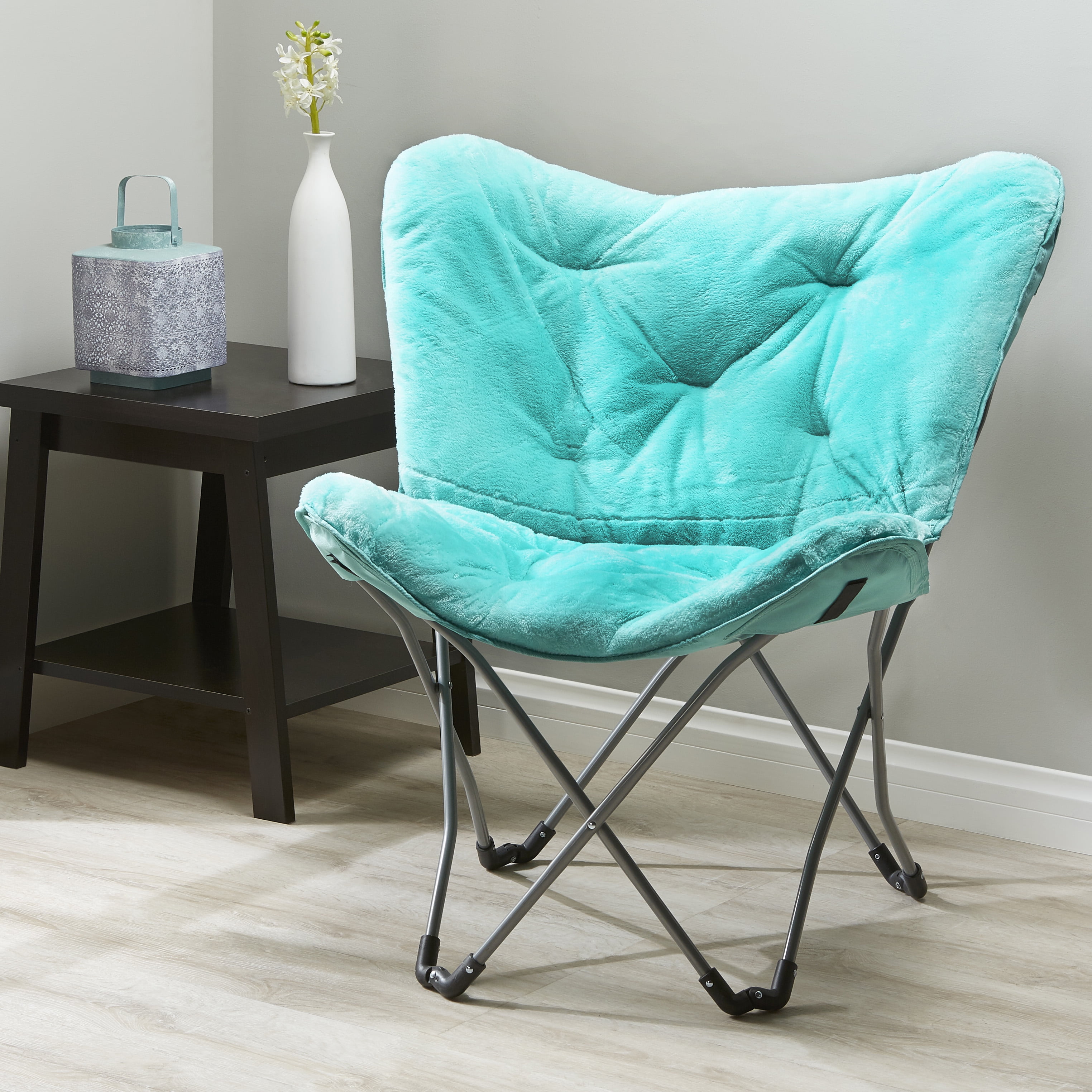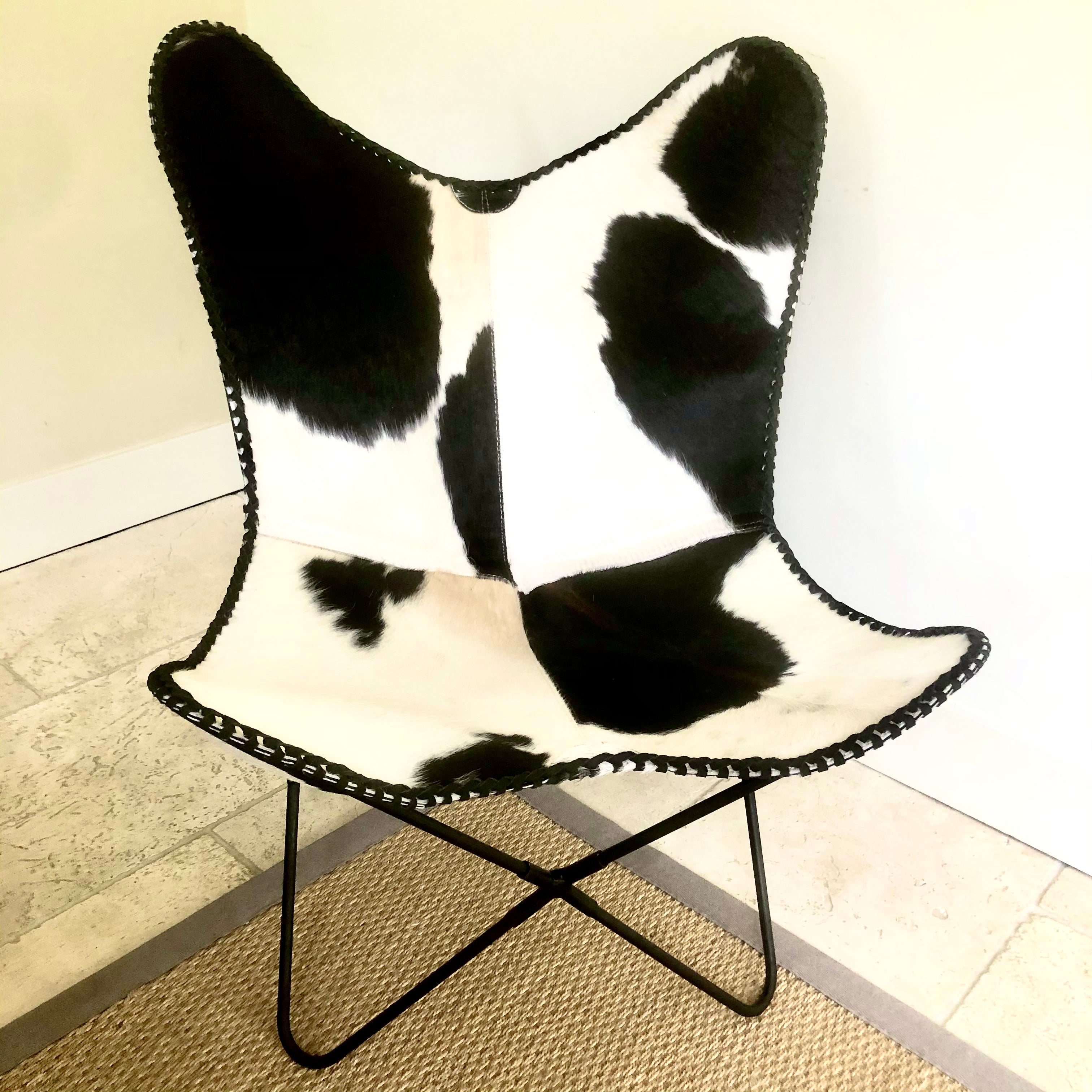Design & Aesthetics of the “Black Fur Butterfly Chair”

The black fur butterfly chair offers a striking juxtaposition of mid-century modern design and unexpected textural opulence. Its iconic silhouette, known for its sleek lines and minimalist form, is dramatically altered by the introduction of plush black fur, creating a piece that’s both familiar and entirely new. This unexpected material choice transforms the chair from a simple statement piece into a conversation starter, blending high-design aesthetics with a touch of playful luxury.
The visual appeal hinges on the dramatic contrast between the smooth, sculpted curves of the butterfly chair’s frame and the rich, tactile quality of the black fur. The deep black color absorbs light, creating a sense of depth and sophistication, while the fur adds a layer of softness and warmth that counteracts the chair’s inherent rigidity. This interplay of textures and tones elevates the chair beyond a simple seating option; it becomes a statement of personality and a focal point within any space. The fur itself can vary in length and density, further impacting the overall aesthetic, from a sleek, short pile to a luxuriously shaggy texture.
Comparison with Other Chair Styles
The following table compares the aesthetic and target audience of the black fur butterfly chair with other popular chair styles.
| Chair Style | Material | Visual Appeal | Target Audience |
|---|---|---|---|
| Black Fur Butterfly Chair | Black fur, metal frame | Modern, luxurious, unexpected textural contrast, bold | Design-conscious individuals, those seeking a statement piece, luxury consumers |
| Eames Lounge Chair | Leather, molded plywood | Classic, sophisticated, mid-century modern, refined | Mid-century modern enthusiasts, those seeking timeless elegance, discerning consumers |
| Barcelona Chair | Leather, steel | Minimalist, iconic, sleek, sophisticated | Design aficionados, those seeking a timeless classic, high-end consumers |
| Adirondack Chair | Wood | Rustic, comfortable, casual, outdoorsy | Individuals seeking relaxed outdoor seating, those who appreciate traditional designs |
Hypothetical Photoshoot
Imagine a photoshoot showcasing a black fur butterfly chair in a minimalist loft apartment. The setting is bathed in soft, natural light streaming through large, industrial-style windows. The chair is positioned centrally in a spacious living area, against a backdrop of exposed brick walls and concrete floors. Subtle, warm-toned lighting is used to highlight the texture of the fur, creating a sense of depth and richness. The overall mood is sophisticated yet relaxed, reflecting the chair’s unique blend of modern design and luxurious comfort. Styling elements include a plush, oversized black and white throw blanket casually draped over one arm, a sleek, minimalist side table holding a single, sculptural vase with dried flowers, and a carefully placed stack of art books. The overall effect is one of understated elegance, showcasing the chair’s versatility and ability to seamlessly integrate into a variety of interior design styles. The photographer uses a shallow depth of field to emphasize the chair’s texture and form, creating a visually stunning image that captures the chair’s unique appeal.
Manufacturing & Materials of the “Black Fur Butterfly Chair”

Creating a high-quality black fur butterfly chair requires careful consideration of materials and manufacturing processes. The choice of fur, its sourcing, and the construction techniques all significantly impact the final product’s durability, aesthetic appeal, and ethical implications. This section details the materials and steps involved in designing and manufacturing such a chair.
Fur Selection and Properties
The selection of fur for upholstery is crucial, influencing both the chair’s visual appeal and its longevity. Several types of fur offer distinct properties: Faux fur offers a cruelty-free alternative with varying levels of realism and durability. Real fur, while offering a luxurious texture, raises ethical and sustainability concerns. Each option demands careful consideration.
- Faux Fur: Acrylic faux fur is widely available, offering a soft texture and relatively low cost. However, it may shed more readily and lack the luxurious feel of real fur. Polyester faux fur tends to be more durable and less prone to shedding, but can sometimes feel less soft to the touch. The choice depends on the desired balance between cost, durability, and texture. Maintaining faux fur generally involves regular brushing to prevent matting and shedding.
- Real Fur (e.g., Rabbit, Fox, or Mink): Real fur provides a uniquely luxurious texture and feel. However, the durability varies significantly depending on the animal and the quality of the fur. Real fur requires more specialized cleaning and maintenance to prevent damage and preserve its appearance. Ethical and environmental considerations are paramount when choosing real fur, with careful attention needed to sourcing and ensuring responsible practices.
Design and Manufacturing Process, Black fur butterfly chair
The manufacturing process involves several key steps, from initial design to final assembly. Precision and attention to detail are vital at each stage to ensure a high-quality finished product.
- Design and Pattern Making: Begin by creating a detailed design incorporating the desired dimensions and shape of the chair. This stage involves creating accurate patterns for the fur upholstery pieces, considering seam allowances and the chair’s structural components.
- Material Sourcing: Procure the chosen fur fabric, along with the necessary structural materials. These include the steel frame (typically chrome or powder-coated steel for durability), the necessary hardware (rivets, screws, etc.), and any additional padding or lining materials.
- Frame Construction: Assemble the steel frame according to the design specifications. This typically involves welding or bolting the components together. Ensure the frame is sturdy and stable.
- Upholstery Cutting and Sewing: Cut the fur fabric according to the patterns created in the design phase. Sew the pieces together carefully, paying attention to seam strength and alignment. Any padding or lining should be added at this stage.
- Upholstery Attachment: Attach the finished upholstery to the steel frame using appropriate techniques. This might involve stapling, riveting, or a combination of methods, depending on the design and materials.
- Final Inspection and Finishing: Thoroughly inspect the completed chair for any defects or imperfections. Make any necessary adjustments or repairs before final packaging.
Sustainability and Ethical Considerations
The environmental impact and ethical implications of using different fur types must be carefully weighed.
- Faux Fur: While generally more sustainable than real fur from an animal welfare perspective, the manufacturing of faux fur can involve significant energy consumption and the use of synthetic materials, which can have negative environmental consequences. The disposal of faux fur also presents a challenge due to its synthetic nature.
- Real Fur: The use of real fur raises significant ethical concerns regarding animal welfare and the potential for unsustainable hunting or farming practices. The environmental impact can vary greatly depending on the animal species and the sourcing practices. Responsible sourcing, using fur from animals that have died naturally or from farms with high welfare standards, is crucial to mitigate the negative environmental and ethical consequences.
